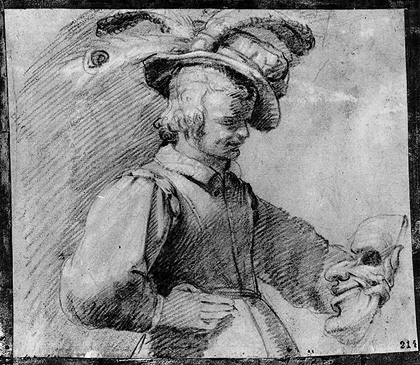The ceremonial entrance of a Caravaggisto: Bartolomeo Manfredi was baptized in Ostiano on 25 August 1582. Very little else is known about Manfredi’s early years, and his presence is not documented again until 1610 in Rome, which leaves much of Manfredi’s youth and early training shrouded in obscurity.
Further questions have been posed as to his level of study with his famed contemporary, Michelangelo Merisi da Caravaggio. What can undoubtedly be declared, however, is that Manfredi bore a particular talent at emulating the technique of Caravaggio. This skill was revealed in some of his earliest Roman commissions, including Cupid Chastised (1613), and only grew as time progressed.
So adroit was Manfredi in mimicking Caravaggio’s tenebristic technique that he became a leading figure of the “Caravaggisti,” those artists who wished to follow in the artistic footsteps of the tenebristic master. As history progressed, this close alignment with Caravaggio’s style proved problematic when efforts were undertaken to define Manfredi’s oeuvre, particularly as Manfredi neglected to sign many of his works. He is often credited, though, with spreading the popularity of Caravaggio’s approach across the European continent following the latter’s untimely death in 1610. Manfredi died 12 December 1622 in Rome.
Cupid Chastised, 1613. oil on canvas. Art Institute of Chicago.
Fortune Teller, c. 1616-1617. oil on canvas. Detroit Institute of Arts.
An Actor Holding a Mask, black and white chalk on ochre paper. Biblioteca Ambrosiana, Milan.
Allegory of the Four Seasons, c. 1610. oil on canvas. Dayton Art Museum, Ohio.
The Triumph of David, c. 1615. oil on canvas. Musée du Louvre, Paris.





